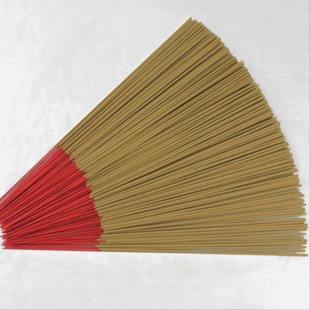What knowledge does Jiangmen bamboo stick fragrance have
The Chinese people used incense very early. Before the Han Dynasty, incense was mainly used in soup and ritual incense. During the Han, Wei, and Six Dynasties periods, Taoism was prevalent, and the Boshan style incense culture flourished. The Sui, Tang, and Five Dynasties not only flourished in the use of incense, but also enriched various forms of incense practices due to the integration of Eastern and Western civilizations. During the Song and Yuan dynasties, enjoying fragrance, fighting tea, arranging flowers, and hanging paintings were collectively referred to as the "four common busyness" in the elegant days of the upper class society for cultivating emotions and character. Many specialized books and manuals on the origin, carriers, materials, and methods of making incense are also presented at this moment. In the Ming Dynasty, the study of incense was combined with Neo Confucianism and Brahmanism to form "sitting incense" and "teaching incense", becoming a subject of forest meditation and investigation. The construction of incense burners, meditation rooms, and the preservation of Xuande furnaces by Buddhist monks and literati has become fashionable. In the prosperous era of the Qing Dynasty, the practice of incense became more common in daily life. The study desk, consisting of three pieces of stove, bottle, and box, as well as the incense table and table, became typical decorations for the study room. But later on, with the decline of national power and the invasion of Western civilization, Xiangdao gradually withdrew from the leisurely days of nobility and literati.

When it comes to incense, we easily associate it with bamboo sticks used in temples, Taoist temples, and home worship. Many people also know about agarwood, which is rare, precious, and infinite, and we are very familiar with sandalwood. Few people have heard of the term Hehe incense. Firstly, let's talk about the fragrance of bamboo sticks. The cheapest and most widely used by the general public, especially on the first and fifteenth days of the lunar new year, eating vegetarian food is highly valued by the public. Due to the discontinuity of incense civilization, many believers have no understanding of incense, and their concept of using incense is almost: as long as it is incense, it is good if it is cheap. The truth is that using harmful chemical incense to worship gods and Buddhas is not only disrespectful, but also harms the physical and mental health of living people, including believers and their families, and creates even greater evil causes. Therefore, it is impossible to obtain blessings resolutely! According to reliable information, it is common for monks to suffer from lung diseases due to chemical fragrances. Why are so many people still using chemical fragrances that are already harmful? And although some temples advise their followers not to light incense because incense "pollutes the environment" (which is very humorous), the so-called "heart incense" is also very precious. However, in reality, can such incense still be waited for like this? I believe there are the following reasons:
1. We have a limited understanding of fragrance
2. Very few pure natural fragrances circulate in the market
3. Natural fragrances are more expensive on the surface than chemical fragrances
4. Conformity mindset (temples use it, we all use it, so it's okay)
Article source: Jiangmen bamboo stick fragrance manufacturerhttp://www.dongfangxl.com/
-
09-30
What are the structures of bamboo stick incense?
Bamboo stick incense, also known as string incense, stick incense, or standing incense in Taiwan, and bamboo stick incense in mainland China, is named after its use of bamboo branches, cinnamon bamboo
-
09-30
Incense Manufacturer: Craftsmanship for Making Bamboo Stick Incense
The ancients discovered that any type of spice has the effects of refreshing and calming the mind, so the history of incense burning in China has been over 3000 years, and China can be considered one
-
09-08
Fragrant powder and spice factory: production techniques for bamboo stick fragrance
Nowadays, when making bamboo stick incense, the following methods should be used first:1. Traditional craftsmanship involves hand pouring fragrance.2. Handmade powder coating and mechanical bucket mak
-
08-26
Fragrant powder and spice factory: How to distinguish the quality of bamboo stick fragrance?
We call fragrances made from natural spices "natural fragrances", fragrances with artificially synthesized spices "chemical fragrances", or perhaps "fragrance crafts". Chemical fragrance only has the
